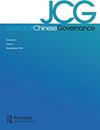An early assessment of the County Medical Community reform in China: a case study of Zhejiang province
IF 3.7
3区 社会学
Q1 POLITICAL SCIENCE
引用次数: 4
Abstract
Abstract Started in Anhui province, later introduced into Shanxi and Zhejiang province and now extensively piloted nationwide, the County Medical Community is China’s version of an integrated health-care delivery system which aims at strengthening the primary health-care system and take full advantage of health-care resources. In this early assessment, we analyzed the content of the County Medical Community Reform in detail in order to understand its operation mechanism, and conducted a case study of Zhejiang. We used the WHO Health Systems Performance Assessment Framework to analyze 11 pilot counties which implemented the County Medical Community Reform in 2017 in Zhejiang province together with a 11 counties that did not launch the County Medical Community Reform for comparison. We found that the implementation of the County Medical Community Reform had several noticeable results in the fields of stewardship, financing and fair financial contribution, creating resources, delivering services, and health-care. Additionally, during the outbreak of Coronavirus disease (COVID-19), we found County Medical Community exert positive influence on the disease diagnosis and treatment in the primary health-care system in Zhejiang province. Finally, we summarized the lessons learned and offered several recommendations regarding the future development of the County Medical Community. Furthermore, we sought to shed light on methods for optimizingthe primary health-care system in China.中国县域医疗共同体改革的早期评估——以浙江省为例
摘要县医共体始于安徽省,后来引入山西和浙江省,目前在全国范围内广泛试点。县医共体是中国版的综合医疗服务体系,旨在加强初级医疗体系,充分利用医疗资源。在早期评估中,我们详细分析了县域医共体改革的内容,以了解其运行机制,并以浙江为例进行了实证研究。我们使用世界卫生组织卫生系统绩效评估框架,对浙江省2017年实施县域医共体改革的11个试点县与未实施县域医共同体改革的11县进行了分析比较。我们发现,县医疗社区改革的实施在管理、融资和公平财政贡献、创造资源、提供服务和医疗保健等领域取得了一些显著成果。此外,在新冠肺炎爆发期间,我们发现县医学界对浙江省初级卫生保健系统的疾病诊断和治疗产生了积极影响。最后,我们总结了经验教训,并就县医学界的未来发展提出了几点建议。此外,我们试图阐明优化中国初级保健系统的方法。
本文章由计算机程序翻译,如有差异,请以英文原文为准。
求助全文
约1分钟内获得全文
求助全文

 求助内容:
求助内容: 应助结果提醒方式:
应助结果提醒方式:


